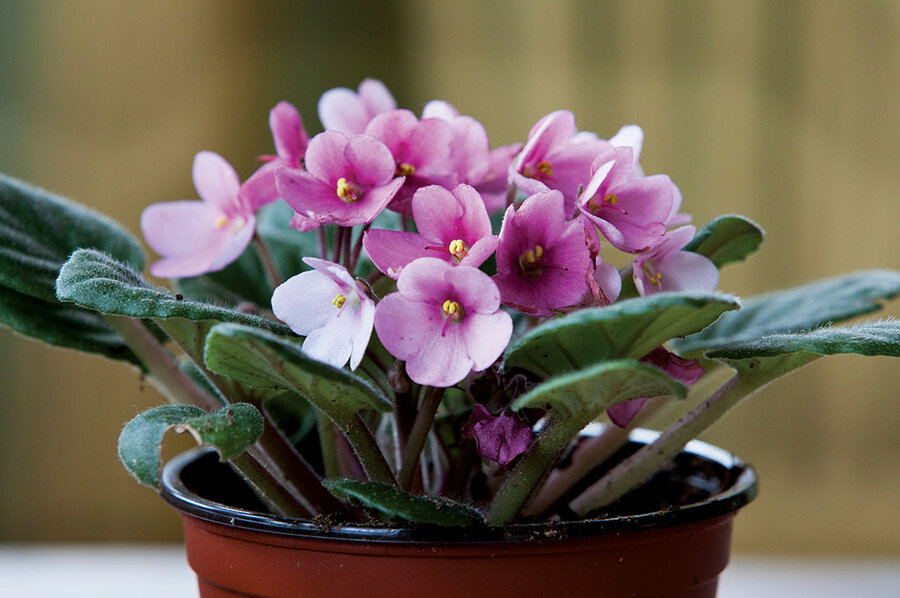Violets for beginners
Loading...
As a child, I would stare in awe at my grandmother’s jewel-colored African violets with their collars of fuzzy leaves, convinced that only gardeners of my grandmother’s high reputation could get plants to bloom so gloriously indoors.
They were stunners, but they were all similar in blossom and color, a trait that didn’t excite the fledgling gardener in me. Today, they come in widely diverse sizes (from three inches in diameter to 16), colors (blue, purple, red, green, pink, yellow, multicolored), bloom shapes, and foliage (including variegated). The best type for beginners, says Ralph “Rob” Robinson of the Violet Barn in Naples, N.Y., are trailing types, with their multiple runners and crowns. His “Bob Serbin” – a semidouble wine-red with white edges and quilted leaves – is one such example of an easy-to-grow beauty. Get the hang of their simple needs, and growing African violets becomes an easy routine.
African violets (Saintpaulia ionantha) – named after Baron Walter von Saint Paul, who brought them from East Africa – are one of the world’s most popular houseplants of all time. They are easy to grow, if you follow these general rules.
Light may be the most important element to get right. They like bright, indirect light – preferably from an east-facing window or fluorescent lights – where the temperature stays between 65 and 80 degrees F. with 50 to 60 percent humidity.
Watering is the trickiest part. Their soil needs to be kept lightly moist at all times. Whether you water from the top or fill a saucer from below, do not let the pot sit in water.
As a rule, violets do best in soils that are loose in texture, porous, and well drained, with a high percentage of organic matter and a pot that is smaller than the overall diameter of the plant.
Lastly, African violets’ bloom, blossom color, and leaf variegation are highly sensitive to environment. Your houseplant may not be identical to the one in a professional grower’s picture.





